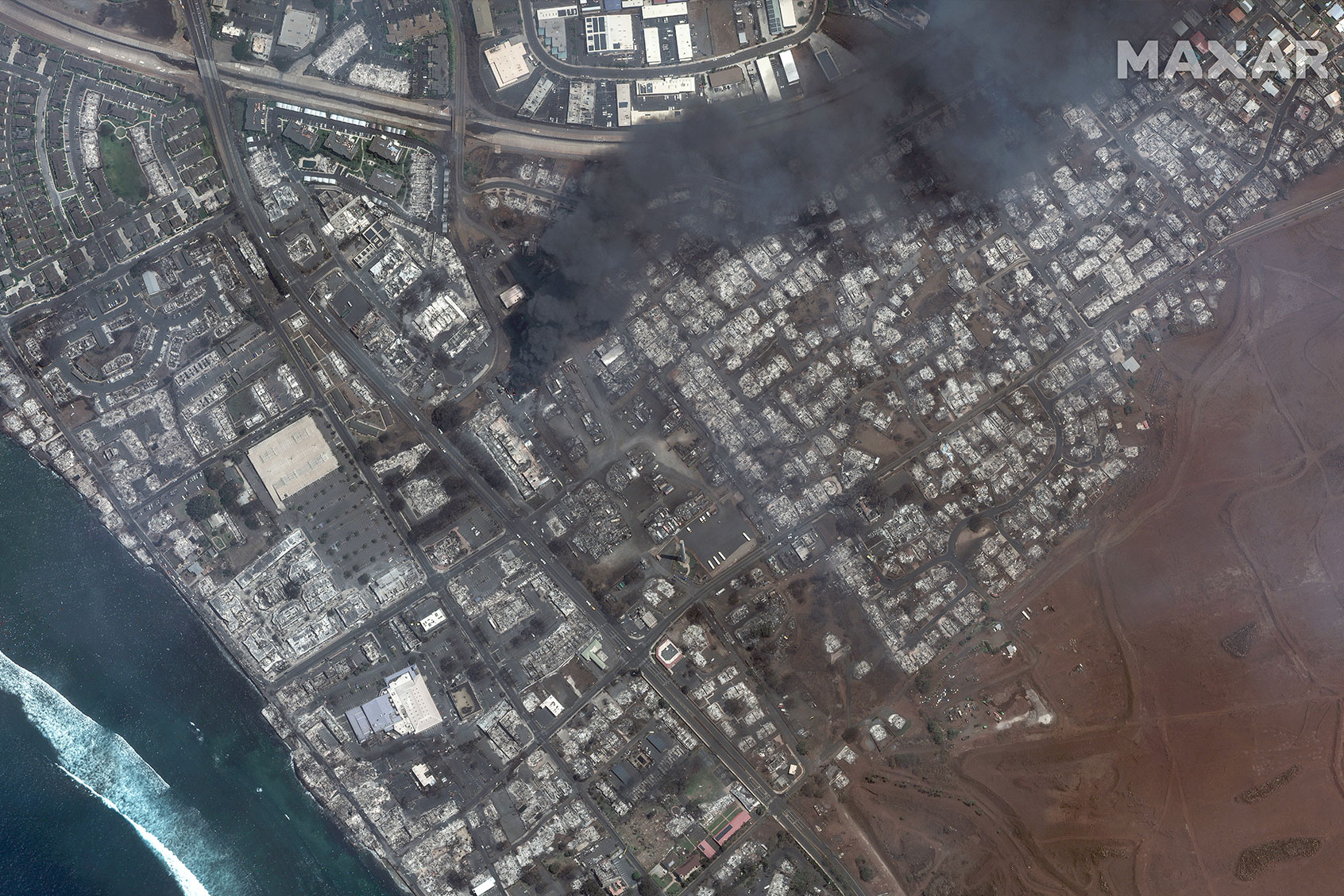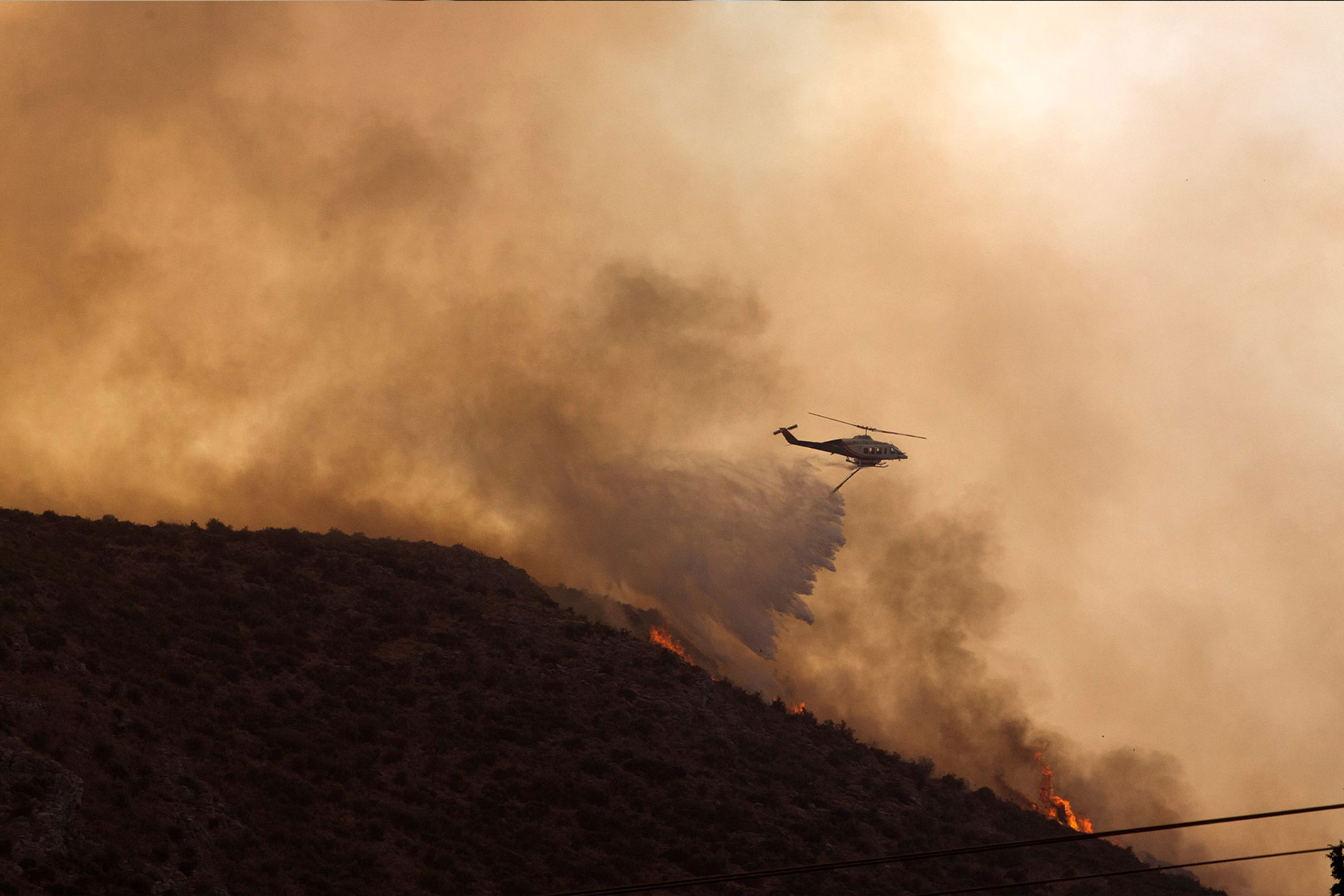This week, social media has been flooded with tragic images of a freakish wildfire that leveled a Hawaiian town, leaving at least 53 people dead and destroying more than 270 buildings, according to county officials August 10. The fires are still not completely out.
Meanwhile, on the other side of the planet, wildfires are blazing through the Mediterranean island of Cyprus, while Portugal and Greece are on high alert for wildfires due to the intense heatwave settling over Spain. July 2023 has officially been designated the hottest month in recorded human history, and thousands of temperature records have been obliterated worldwide. All of this came on the heels of late June 2023, when a massive Canadian wildfire blanketed much of the midwestern and eastern United States in smoke.
“There could not be a more urgent time for us to recognize how climate change will impact some of our most protected lands.”
Despite these developments, a stubborn minority of Americans continue to ignore the conclusive evidence that human activities like burning fossil fuels which emit greenhouse gases, which in turn overheat the planet. According to a recent Pew Research survey, slightly over half of American adults view climate change as a major threat (54%) in large part because of a partisan divide in which only 23% of Republicans and Republican-leaners recognize this to be so. By contrast, 78% of Democrats and Democrat-leaners recognize climate change as a major threat.
Yet when Salon reached out to scientific experts regarding the recent series of wildfires, they all said the same thing: Without question, human-caused climate change is a major factor — albeit not the only major factor — in the 2023 wildfires.
“It’s no secret that wildfires are related to climate change, as are hurricanes,” Sarah Barmeyer, Deputy Vice President for the National Park Conservation Association’s Conservation Programs, told Salon by email. “Wildfire seasons have expanded, and fires have increased in frequency and size, especially in the western United States. More frequent and intense hurricanes fan the flames of wildfires.”
“Ultimately, the wildfires in Greece and Canada are related to the conditions inevitable in a quickly changing climate, and we cannot decouple those effects from carbon emissions which have caused global temperatures to rise.”
At the same time, Barmeyer noted that it was not merely humanity’s emissions of greenhouse gases (primarily from fossil fuels) that led specifically to the Maui wildfires. There are other human-caused factors that also contributed to the Maui event, such as the introduction of invasive plant species — although Barmeyer concluded that “climate change remains the largest factor. Ultimately, the wildfires in Greece and Canada are related to the conditions inevitable in a quickly changing climate, and we cannot decouple those effects from carbon emissions which have caused global temperatures to rise.”
Elaborating on the non-climate change variables that played a role in the Maui wildfires, Hugh D. Safford — a fire and vegetation ecologist at the University of California Davis, as well as the chief scientist at Vibrant Planet, a company that works to mitigate wildfire and drought risk in fire-prone landscapes — explained that while it is important to recognize the role played by global heating in the wildfires, that should not obscure the other factors which also contributed to this catastrophe.
 Maxar satellite imagery showing total destruction of the Lahaina square and outlets after the Lahaina Wildfire, with one building still actively burning. (Satellite image (c) 2023 Maxar Technologies / Getty Images)
Maxar satellite imagery showing total destruction of the Lahaina square and outlets after the Lahaina Wildfire, with one building still actively burning. (Satellite image (c) 2023 Maxar Technologies / Getty Images)
“It’s actually not surprising to me that this sort of event happened in Hawaii,” Safford explained, noting that the islands have been experiencing climatic drying for some time, with predictions for only more drying and warming. This gives fire a lot of highly flammable fuel. As Safford observed, this is clear in the way that “human actions have reduced forest cover, brought in introduced grasses — very often African grasses that were associated with grazing practices — and that this is exactly what happened in Hawaii. And then they’re introduced shrubs as well. All of them are very, very flammable.”
While it is tempting to try to ascertain exactly what percentage of the blame for the wildfire rests with climate change, and what percentage rests with the introduction of invasive plant species and other human activities, such undertakings are notoriously challenging. Crystal Raymond Ph.D., a climate adaptation specialist at the University of Washington’s College of the Environment, illustrated how this is the case by comparing the ease of attributing heatwaves to climate change with the comparative difficulty of doing likewise for wildfires.
We need your help to stay independent
“Factors that affect the fire such as temperature, fuel aridity, relative humidity, and wind leading up to and during the fire can be compared to historical conditions,” Raymond wrote to Salon. “How frequent have these conditions been in the past? How rare are they? 99 percentile, 99.9 percentile, unprecedented in the historical record? That is relatively easy to calculate. Then climate modeling can show how much more likely those conditions are given the climate warming that has already occurred and will continue in the future.”
With that information, a person can deduce the degree to which the conditions that caused a given wildfire were produced by a warming climate — but only up to a point. “For fires though, it is less direct than heatwaves because other factors also matter, like the cause of the ignition and the efforts to stop the fire,” Raymond said. “These factors aren’t an issue when attributing heatwaves to human-caused climate change.”
Want more health and science stories in your inbox? Subscribe to Salon’s weekly newsletter The Vulgar Scientist.
“At least in the western US, and in sub-tropical regions of the globe, it is the potential for more and longer-lasting droughts that has a climate change connection.”
At the same time, according to Nicholas A. Bond — climatologist for the state of Washington — there are ways that one can with certainty specify that climate change has created particular conditions essential for causing wildfires.
“Certainly different weather patterns are responsible for dry weather on extended time scales and high winds on shorter time scales,” Bond told Salon by email. “The latter are necessary for extreme wildfire behavior — the former tend exacerbate fire size and intensity. And at least in the western US and in sub-tropical regions of the globe, it is the potential for more and longer-lasting droughts that has a climate change connection.”
This is a big reason why scientific experts agree that humanity must undertake efforts to mitigate the negative impact of climate change. Their point is not that climate change alone causes these wildfires, as everything from winds to other man-made behaviors likewise play a role, but rather that wildfires are far more likely to occur — and to be more intense when they occur — as a result of climate change.
We need your help to stay independent
“Multiple lines of scientific evidence show that warmer and drier conditions in the future due to man-made climate change will increase the potential for wildfire,” Raymond explained. “The more warming we have if we don’t meet Paris goals, the greater that potential for wildfire is and we will see more wildfires in the future.”
Even after acknowledging the role that winds play in spreading these wildfires, Raymond still concluded that “climate change sets the stage for more wildfires, but wind delivers the event.”
Barmeyer, meanwhile, explained that although wildfires “are a part of life,” the reality is that “with drier, hotter conditions related to climate change, we will see more disastrous wildfires. Like the wildfires in Canada, this will have major implications for wildlife, ecosystems and air quality. In addition, fire swirls and other phenomena are becoming the new normal for wildfires.”
Even if humanity meets the Paris climate accord goals, “we will still have to learn effective place-specific ways to handle and extinguish fires,” Barmeyer said. “If we do not, these fires will only continue to worsen and become a more common occurrence across larger swaths of the United States.”
Barmeyer also pointed out that Haleakalā National Park has been closed to the public indefinitely because of the Maui wildfires. “There could not be a more urgent time for us to recognize how climate change will impact some of our most protected lands,” Barmeyer wrote, later adding that President Joe Biden announcing park projects related to the Inflation Reduction Act earlier this week “illuminate how $700 million will be allocated to national parks throughout the country. While the Inflation Reduction Act allocated resources to fight climate change, we must continue to consider climate change in our funding for public lands and curb carbon emissions at their source.”
Read more
about climate change

